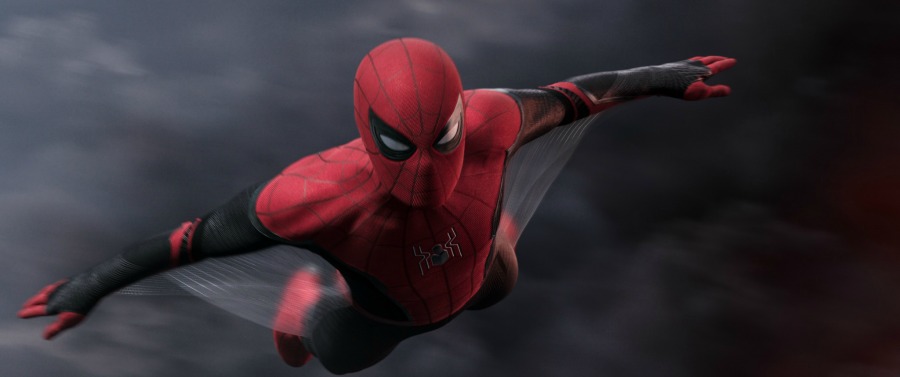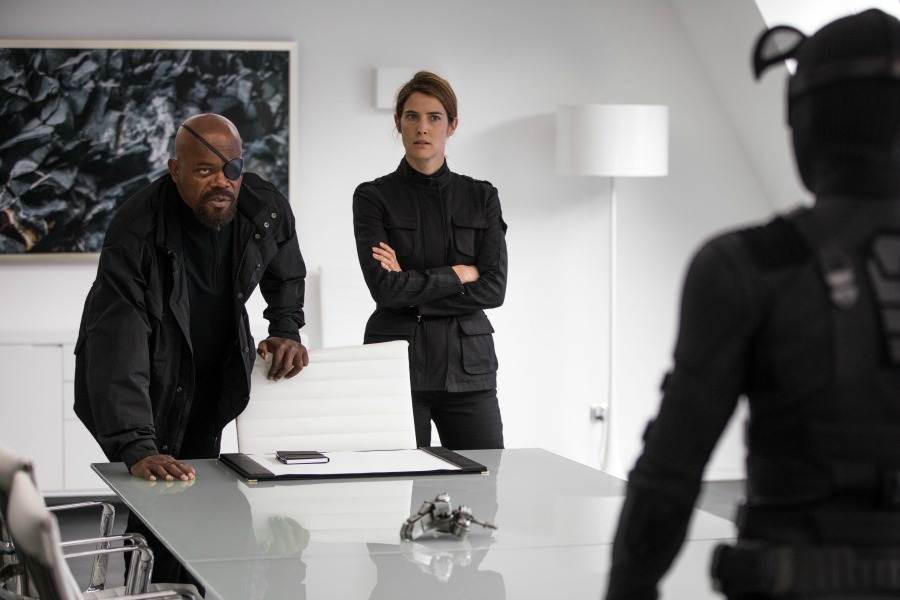
Warning: The following interview will include spoilers for Spider-Man: Far From Home. Read at your own risk.
If you’re reading this, you’ve likely watched Spider-Man: Far From Home, a film that picks up after Avengers: Endgame left off, revealing a world scrambling to come to terms with the fact that half the population disappeared and then magically reappeared five years later. The MCU calls this “The Blip,” and it’s how we enter this latest Spider-Man story, accessing the Blip from Peter Parker's perspective.
Fandango recently sat down with Marvel Studios chief Kevin Feige, and we talked about the origins of the Blip, as well as about some of those major twists in Far From Home. From the big Mysterio reveal to the existence of a real multiverse to those wild post-credits scenes and what they mean for future MCU movies, Feige confirms it’s all part of a bigger plan that will fuel “many years of storytelling” to come from Marvel Studios.
Fandango: For so long, fans referred to what happened with Thanos as “The Snap,” but now in this film we are introduced to “The Blip.” Where did the Blip come from? Did the naming of it come fast for you?
Kevin Feige: It came pretty fast. We always referred to it as the Blip, and then the public started referring to it as the Snap. We think it's funny when high school kids just call this horrific, universe-changing event the Blip. We've narrowed it down to, the Snap is when everybody disappeared at the end of Infinity War. The Blip is when everybody returned at the end of Endgame… and that is how we have narrowed in on the definitions.

Fandango: Fans were excited when this film teased the potential of a multiverse being introduced into the MCU, but it’s just a Mysterio illusion. Does that mean we’ll never see a multiverse in the MCU?
Kevin Feige: No, it just means he was full of s**t. I mean, in Doctor Strange, we hear the Ancient One talk about the multiverse, so we’ve already established it as a thing.
Fandango: Speaking of Mysterio, he is reminiscent of Michael Keaton’s villain in Spider-Man: Homecoming because the two are these ground-level bad guys who have it out for Tony Stark. How important was it for this villain to have that connective tissue?
Kevin Feige: I think what was important is that we started by saying, this is not a science experiment gone wrong that created that. We like that our MCU Spidey villains are rooted more in reality, if you can call it that. So that's where we started with Mysterio. And getting into the notion of drone technology and hologram technology, and how would one would have access to that level of technology takes you back to Stark Industries and wanting to fill the void left when Tony sacrificed himself. We thought it's fun tying in characters from the other films, like the Peter Billingsley character who just worked alongside Obadiah Stane in our very first movie. We thought it was fun to see him return.
Fandango: The mid-credits scenes in this film were pretty significant. Should we assume that the Peter’s reveal will be a major storyline moving forward for Spider-Man?
Kevin Feige: I think so. Much like the end of Iron Man, saying, okay, the rules have changed. Which now means we're going to have to do something completely different next time. The how and the when and the specifics can change and evolve, but setting yourself up for something that has never been done before... at the end of Iron Man, it was a hero publicly outing himself so that in the next movies and all subsequent movies, we couldn't fall back on the secret identity trope which had been part of Iron Man's story for decades in the comics. And now people know Peter's identity. People now think he's a villain, Mysterio plays one last trick on him and succeeds... [so that] means everything's different. Where it goes, we'll see. But it's exciting that it once again sets us up for a Peter Parker story that has never been done before on film.

Fandango: Similar to the end of Iron Man, we also get a post-credit sequence featuring Nick Fury, but this time he’s kicking back on a Skrull ship, living life on his own terms. Also, there’s a line in the film that talks about Kree splinter cells existing…
Kevin Feige: You heard that!
Fandango: Of course! So is this Kree-Skrull situation going to continue and become something significant in the next phase?
Kevin Feige: Well, that Kree-Skrull war was a big part of the comics and a big part of the Captain Marvel mythology that we wanted to build into. And there'll be lots of questions like, what was Captain Marvel up to in the 20-plus years between when she flew away at the end of Captain Marvel to when she appears in Endgame? That particular line, though, is one of the handful of Easter eggs sprinkled throughout the film that Maria or Fury say that give an indication that something's different about them.
Fury does things earlier in the film where he refers to the earth to Peter as "your world," instead of "our world." And when you watch it for the first time, it just goes by. But when you watch it a second time, knowing what's coming, it's fun to see that they're there. And Jon Watts is very good at laying in those Easter eggs
Fandango: When you do look at what's coming next for Marvel Studios, do you look at it in terms of how do we do what we've done before but different? Or do you approach it in terms of how do we do what we've done before but bigger?
Kevin Feige: Well, it's the same way that we approached each of the films in the 23-film Infinity saga, which is, how do we do something we haven't done before? How do we do something we've never done? How do we do something unique? How do we bring a style and a tone or a genre that we haven't done before? And that is how we try to approach every movie, and certainly how we're approaching our next many years of storytelling.
Spider-Man: Far From Home is in theaters now. Get your tickets right here at Fandango.












